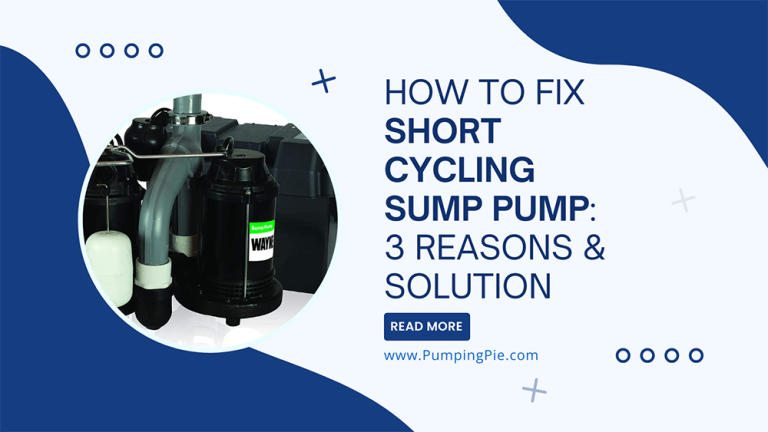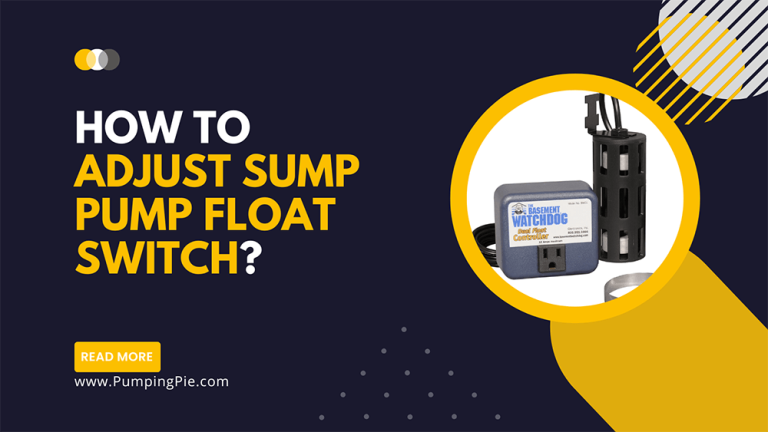Can I Drain Dehumidifier into Sump Pump?
A dehumidifier keeps the house away from the extra humidity. It is essential to drain the machine regularly to prevent mold. You can quickly drain the dehumidifier by using a sump pump basin. However, many homeowners don’t know how to drain a dehumidifier into sump pump. Now the question is, can I drain dehumidifier into sump pump?
As it sucks the additional humidity and blows dry air inside the house, the machine drips water inside a tank. So, you need two hoses and some essential tools. The hose releases the water into the basin by using gravity.
In this context, we’ll give you a proper guideline for using a sump pump to drain the dehumidifier completely.
Contents
Advantages of Draining A Dehumidifier into The Sump Pump
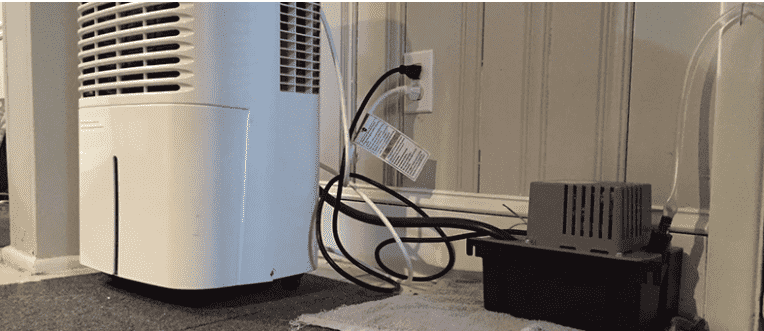
The dehumidifier contains a condensate tank where it releases the water drops. As the dehumidifier absorbs the extra humidity from the air, the empty condensate tank fills after using a few days.
If you don’t remove this water from the tank, the dehumidifier may fail to absorb the humidity. There are so many options to drain a dehumidifier.
However, a sump pump gives you more advantages in draining your dehumidifier.
Time And Money Saver
Draining a dehumidifier through the sump pump is an affordable option for homeowners. In this process, you need only some simple tools that are available in the home or low price.
Besides, as a sump pump removes water by following the water stream, it can work quickly. And in this way, it also saves your time.
Easy Installing Process
You only need some hose and screw drives to install the whole process for using a sump pump in your dehumidifier.
Also, this continuous drain dehumidifier connecting method is more accessible than any other drainage option. By applying this easy installation method, you can ease the draining system.
No Harmful Mechanism:
There are no threats to the dehumidifier machine from draining into the sump pump. The dehumidifier drains through wall by using the hose that connects the tank to the pump. That’s why there is no harmful mechanism in this method. Also, the sump pump keeps the components fully dry to work perfectly again.
Quick Management Facility
A dehumidifier collects the water and drips it quickly. That’s why the condensate bucket fills after using a few days. Using the sump pump method doesn’t need any complex tools or mechanisms.
For this reason, you can set up the system without any hassles. Also, you can keep the pump connected with the bucket for the next draining period.
Common Troubleshooting To Drain A Dehumidifier
Sometimes, users face some common and tricky issues draining the dehumidifier into the sump pump. However, taking some significant steps can solve these issues quickly.
So, we’ll give some additional tips and suggestions to handle these issues. Follow these tricks whenever you’re in trouble with your dehumidifier.
| Issue | Reason | Solution |
| Hose leakage | Lacks proper adjustment of the hose and adapter. | Tight fit the adapter and use a silicone sealer to prevent leakage |
| Clogging | Clogging with bends, kinks, or other cracking damage. | Remove the clogged elements and use sealer or tape over the cracks. |
| No Draining | Build-up drying and spacing. | Do a deep clean inside the dehumidifier. |
| Hose adjusting | Not taking the exact measurement of the hose and adapter while making the hole. | Use a scale and take the measure in diameter to make the exact size of the hole. |
Can I Drain Dehumidifier into Sump Pump?
Generally, sump pumps contain a large bucket system basin. So, in this process, the dehumidifier releases the liquid into this sump pump basin. Also, you can only work through this method when you unplug the machine’s cord. Plugged cords may cause damage or an accident.
Now, we’ll discuss the following steps to drain the dehumidifier.
Step 1: Collect Necessary Equipment
As mentioned, you need some simple, handy tools to drain this machine. It’d be best to have ten-inch and three-inch hoses, one adapter, silicone seals, a drill machine, hole maker tools, and a razor knife. All these tools are available in our homes and are also easy to use.
Step 2: Make A Hole in the Sump Pump Basin Cover
Firstly, make a hole in the side corner of the cover. It’d be best if you connected the dehumidifier through this hole with pump basin.
So, try to make the exact hole size to attach the hoses. Otherwise, the adapter may leak when the water passes through the hose.
Step 3: Attach The Adapter
Now, attach the adapter with the hole. You can spin the adapter inside the spot to make it accessible and easy to remove.
After that, use some silicone sealer outside of the adapter. A silicone sealer can prevent leakage while draining and adjust the hoses tightly. For better results, use the sealer on both sides of the adapter.
Step 4: Attach The Hoses With an Adapter
Take the three-inch hose and make it shorter by cutting through the razor knife. Now, connect it with the inside portion of the adapter. This hose remains inside the sump pump basin and releases the water.
After that, take the ten-inch hose and connect one side with the outside portion of the adapter. The other side helps you to connect the dehumidifier to the sink drain.
Step 5: Connect The Dehumidifier With the Hose
Place the dehumidifier on a higher area as it uses gravity to drain the liquid. So, it needs to be in a higher place from the hose and the pump. Now, use the other side of the ten-inch hose to connect dehumidifier to drain pipe.
Open the machine and adjust the hose adapter with the plastic pipe. The adapter is made from metal. So, it can break the plastic pipe while changing. Make sure you’re doing it carefully.
Video of Draining Dehumidifier into Sump Pump
Check the video below to get more clear instructions to drain your dehumidifier.
FAQs
How to drain a dehumidifier into a sealed sump pump?
As a sealed sump pump has an airtight cover, you must use two hoses to drain a dehumidifier. Firstly, make a hole and adjust the tight-fit adapter. Now, connect the hoses with the adapter and seal them with silicone. Use one of the hoses to connect the pump with the dehumidifier.
How do you connect a dehumidifier hose to a sump pump?
It’d be best to have a ten-inch two-sided garden hose to connect a dehumidifier hose to a sump pump. This hose connects with both the machine and the sump pump. Connect one side with the basin cover hole and the other to the machine’s plastic pipe.
Where the water should be drained from a dehumidifier?
You can drain the water from a dehumidifier in three fundamental ways. External pumping, internal pumping, and gravity use are the most common ways to drain the condensate tank. Generally, using other pump options, you can drain the water inside the sump pump basin or any drainage system.
Where should I drain my basement dehumidifier?
You can drain the dehumidifier in the sump pump basin if it stays near the basement. However, keeping the machine on a cement block or inside a higher place than the pump and hose would be best. Lastly, your basement dehumidifier drains perfectly if the hoses allow using gravity.
Should you put a dehumidifier near a sump pump?
You can’t put a dehumidifier near a sump pump while draining. If you keep the machine near the pump, the hoses can’t drain the liquid perfectly. As a sump pump needs gravity to work, the distance between the tank and the hose matters. Place the device in the upper section and far away from the hose.
The Bottom Lines
Draining a dehumidifier is quite essential. If you can’t drain the machine regularly, chances are high of producing mold and other bacteria inside your home. So, draining your dehumidifier through the sump pump will be the easiest option for regular maintenance.
However, you should be fine since we’ve shared all the ins and outs regarding Can you Drain Dehumidifier into Sump Pump. Take proper steps and you are good.
As an Amazon Associate, I earn from qualifying purchases.

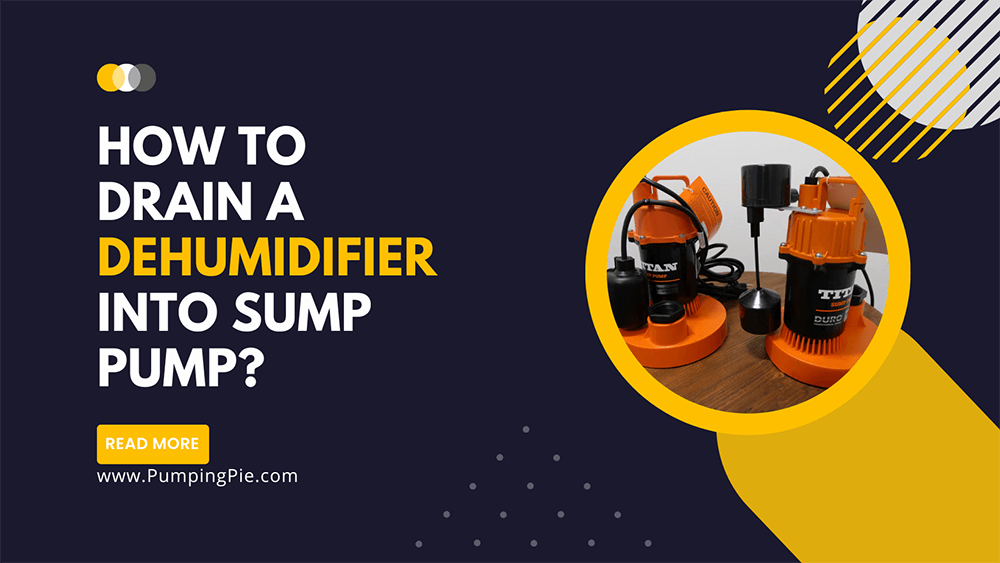
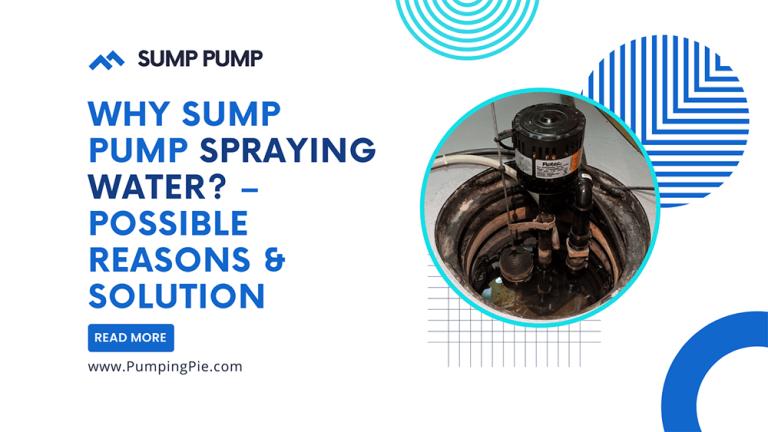
![How To Unfreeze Sump Pump Discharge [Repair Guide & Fixes]](https://pumpingpies.com/wp-content/uploads/2022/08/How-To-Unfreeze-Sump-Pump-Discharge-Repair-Guide-Fixes-768x432.png)
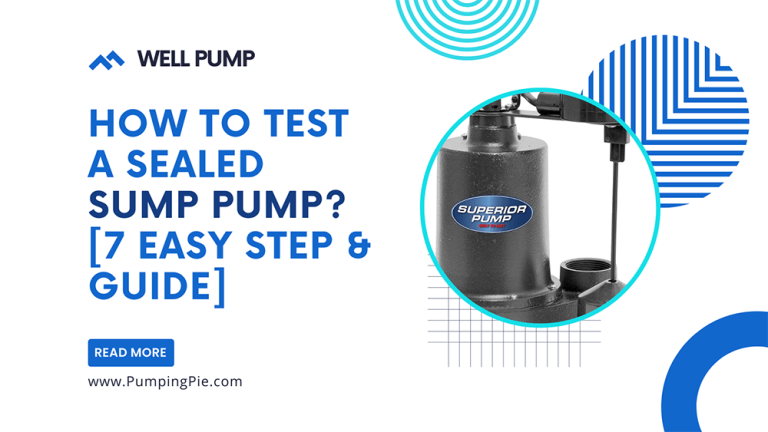
![How Deep Should A Sump Pump Be? [Find All Answers]](https://pumpingpies.com/wp-content/uploads/2022/12/How-Deep-Should-A-Sump-Pump-Be-Find-All-Answers-768x432.png)
